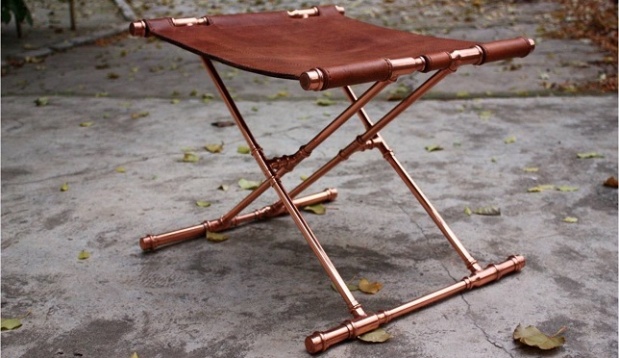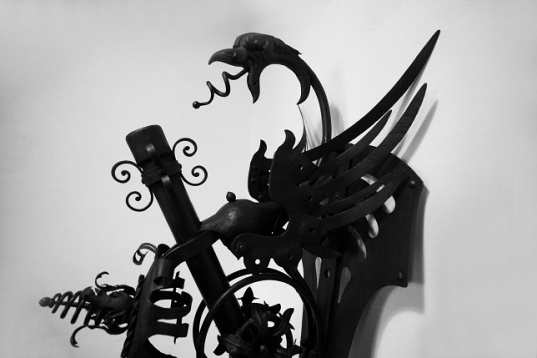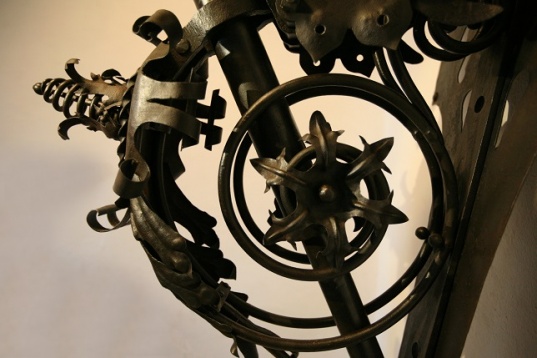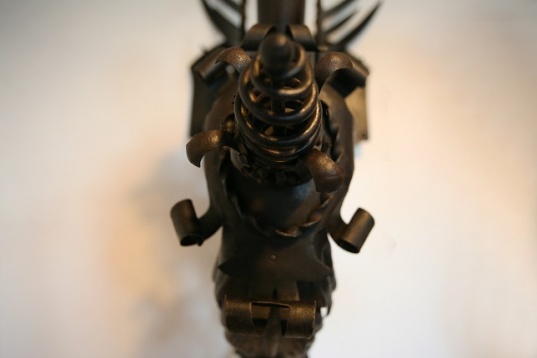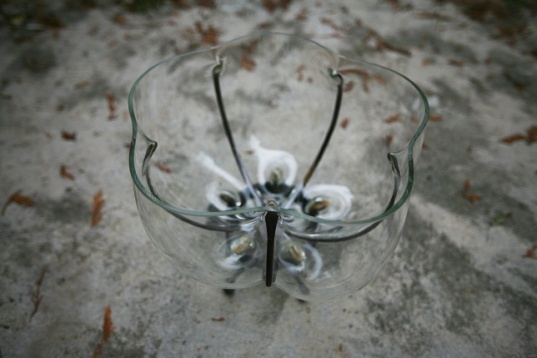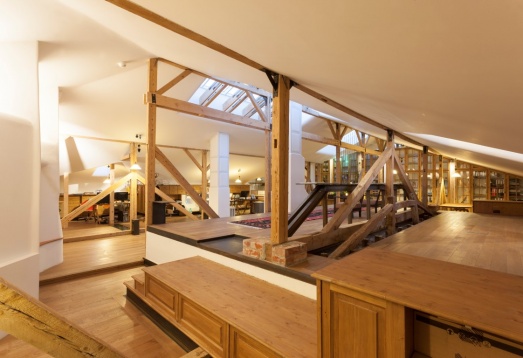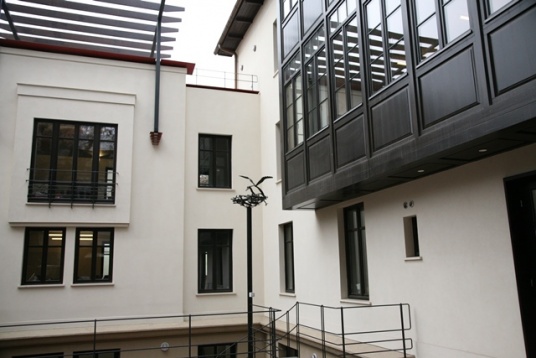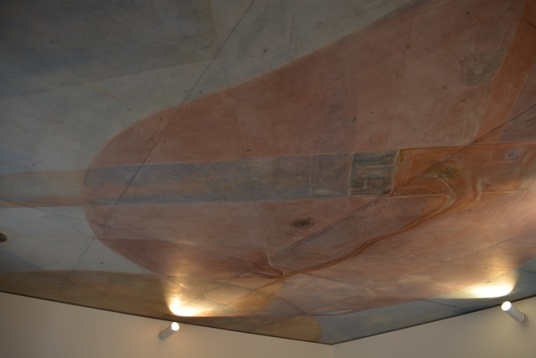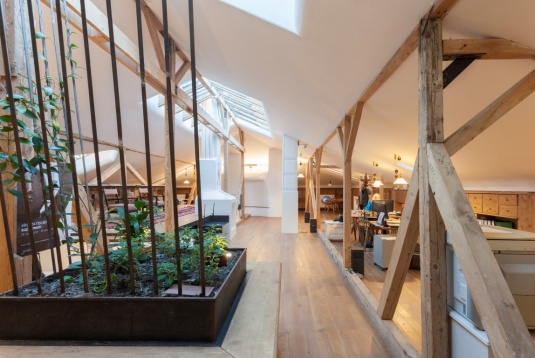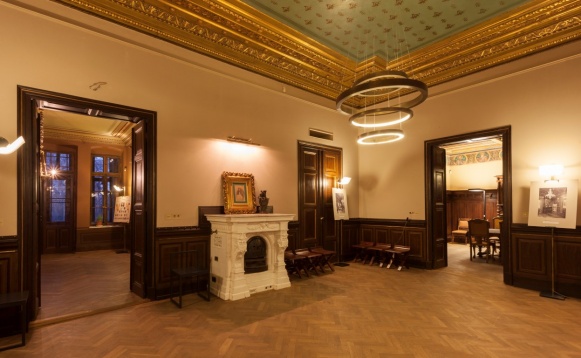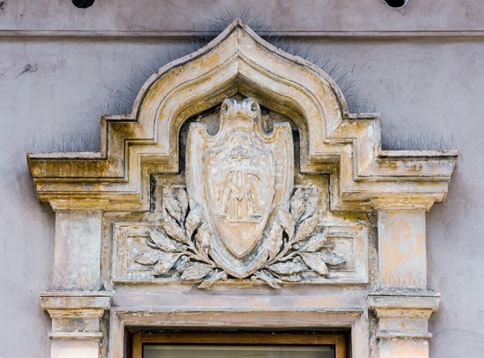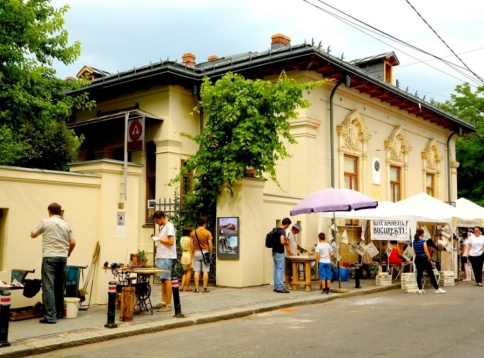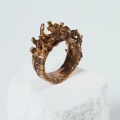HISTORY
Serban Sturdza graduated from the Ion Mincu Institute of Architecture in 1971, after carrying out an educational activity in the School of Arts and the Faculty of Architecture of Timisoara. He made a lot of architectural projects and a wide variety of urban regeneration projects.
ROMANIAN DESIGN WEEK APPEARANCES
2019 // We forge iron at the manor!
„We forge iron at the manor!” is the name that gathers around a continuous blacksmithing school aimed to the locals in Țibănești; also a suite of traditional crafts and experimental techniques workshops and a collection of objects created in this context. Objects are born in the collaboration: architects, blacksmiths, local students and volunteers. Under the guidance of a French compagnon, the villagers, but also whoever is interested, can learn to become a crafty smith. The created objects vary and are very useful for the restoration of heritage buildings, but also for contemporary architecture.
Every year, architects Șerban Sturdza and Alexandra Mihailciuc together with blacksmith Gabriel Padioleau organize traditional crafts workshops, affirming the Carp manor as a continuously developing cultural center. The directions of the cultural program are mutually enriching, forming beyond objects, an educational background, attitudes and interactions necessary for the contemporary scene.
2016//Ghika House - Dionisie Lupu 33
Dionisie Lupu 33 is an extension, therefore the architects asked themselves how they can create a dialogue with the old house in terms of shape, used material and expressiveness. The existing house dates from the XIX century and it is painted, very decorated and extraordinarily interesting (it has several layers of painting). The building aims to integrate in the Bucharest parceling, emphasizing porosity in regard with the compositional and land occupation rules. The intervention reinterprets characteristic elements as the bow window and the backyard.
2015 // Mincu House- Headquarters of the Chamber of Romanian Architects
Prodid is an architecture laboratory with full design services: product design, exhibition spaces design, restoration, community projects. Architect Ștefan Sturdza worked on many restoration and rehabilitation projects and also on some urban development projects. He is now part of various non-profit organisations dedicated to the protection of the national patrimony.
Serban Sturdza graduated from the Ion Mincu Institute of Architecture in 1971, after carrying out an educational activity in the School of Arts and the Faculty of Architecture of Timisoara. He made a lot of architectural projects and a wide variety of urban regeneration projects.
ROMANIAN DESIGN WEEK APPEARANCES
2019 // We forge iron at the manor!
„We forge iron at the manor!” is the name that gathers around a continuous blacksmithing school aimed to the locals in Țibănești; also a suite of traditional crafts and experimental techniques workshops and a collection of objects created in this context. Objects are born in the collaboration: architects, blacksmiths, local students and volunteers. Under the guidance of a French compagnon, the villagers, but also whoever is interested, can learn to become a crafty smith. The created objects vary and are very useful for the restoration of heritage buildings, but also for contemporary architecture.
Every year, architects Șerban Sturdza and Alexandra Mihailciuc together with blacksmith Gabriel Padioleau organize traditional crafts workshops, affirming the Carp manor as a continuously developing cultural center. The directions of the cultural program are mutually enriching, forming beyond objects, an educational background, attitudes and interactions necessary for the contemporary scene.
Dionisie Lupu 33 is an extension, therefore the architects asked themselves how they can create a dialogue with the old house in terms of shape, used material and expressiveness. The existing house dates from the XIX century and it is painted, very decorated and extraordinarily interesting (it has several layers of painting). The building aims to integrate in the Bucharest parceling, emphasizing porosity in regard with the compositional and land occupation rules. The intervention reinterprets characteristic elements as the bow window and the backyard.
2015 // Mincu House- Headquarters of the Chamber of Romanian Architects
The "Ion Mincu" House is part of an important Bucharest pedestrian route and has set up strong connections with riverans and local institutions in order to create "a core" for dialogue, debate, problem-solving. Mincu House can be considered as "an engine" which has activated its neighborhood.
It was a stroke of luck that the former house of Ion Mincu, the creator of the „Neo-romanian” architectural style was on sale when the „Romanian Chamber of Architects” was looking to fiind new headquarters. „The House at the Corner”, as it is known, manages to preserve, even after restoration, the smell of the old fire places that gives you a familiar, pleasent feeling. The new spaces that were created in the attic were designed to blend in with the rest of the house. These new spaces, that now host offices, exhibitions, conferences, have the advantage of making you feel like „home”. The house was built in 1890 using bricks, wooden floors and timber roof trusses. With the house being a historical monument, the restoration was subtle although no compromises were made concerning the new designed attic space. In order not to affect the painted ceilings, due to vibrations, the wooden floor was consolidated. The skylight reveals the entire space, including the visible roof wooden structure. Natural sunlight is also entering through the circular „funnel”-windows that connect the interior with the street and the garden. The project was developed step by step, adapting to the situations that occured. All the stories about the house and all the objects that were found, are now displayed in „The Hidden Museum” inside. You can find there, alongside the memorial component, a collection of specific instruments that were donated by various architects in the comunity. The museum offers a different perspective from the tarditional „shopwindow” approach, by encouraging visitors to explore the house. Traditional building materials were used everytime it was possible to do so. As an innovative approach, the construction site was also the place for a restoration class, welcoming volunteers who wanted to get familiar with the specifics of restoration. Specialized volunteering brought at least 3 major advantages: first, it offered a „real life” experience to the students who weren’t familiar with the workings of a construction site; it also developed a symbiosis between several connected disciplines of architecture (interior architecture, restoration, preservation, construction, landscaping); and not lastly, it managed to turn the problem of incomplete funds into a situation where everyone had something to gain. The house was returned to the neighborhood and is now the place for events concerning the architects’ community, classical music concerts played with the windows wide open for the entire local community, piano lessons for children, art exhibitions and also book launches. “The House at the Corner” is now more than an administrative location for the “Romanian Chamber of Architects”, it is a real “community house”.
















